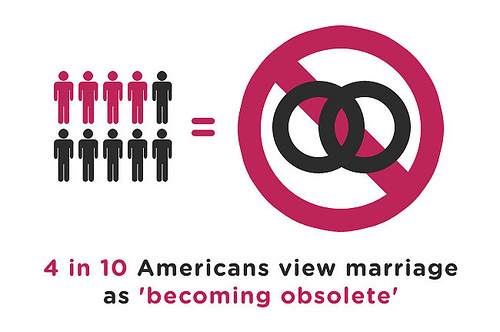Piracetam is a nootropic – a compound used to improve mental performance in some way. They’re often called (and sold as) “smart drugs.” The name derives from the Greek words nous and trepein, meaning “mind” and “to turn” respectively. Or so Wikipedia says at least. You may be familiar with the concept of smart drugs as a result of seeing Face from the A-Team taking the fictional (but highly desirable nonetheless) drug “NZT” in Limitless.
Piractam: Intelligence in one gulp? (or two if you’re a wussy who can’t swallow tablets)
Piracetam is a prescription drug given for a range of reasons, but it only reached true fame and stardom after people on the internet started saying it made them smarter. Observe:
“I am not used to have this much energy and now I could do things more easily. I even started to multitask, which is close to impossible in my regular state of mind. Now, ideas are popping up spontaneously and it is no effort to execute the corresponding actions. I also feel more self-esteem, confidence and feel in The Zone: Flow. I feel attentive, centered and motivated. My eyes are more energetic, powerful, wide open and present. I have glowing blushes on my cheeks, a smile on my face and I feel happy, it IS just great!!!” (source)
Don’t get too excited. I’m in the skeptical camp on this one, especially when it comes to spectacular reports like this. And yes this does come from experience, of this any many many other smart drugs (but more on that another time).
Effects on cognitive disorder

Clever marketing for the Limitless film. Sadly, it’s not actually available! (photo credit)
A good few studies have observed beneficial effects on people with age-related cognitive disorder, such as improved performance on memory tests. It might also reduce the deterioration that people normally experience when its taken over longer periods. According to one meta-analysis, 60% of patients taking piracetam saw improvements, while only 30% of those taking placebo saw improvements.
This is well enough, but note that you can’t simply generalise results observed on clinical populations to healthy populations and expect the same results. In other words, just because it helps people with lower than normal cognitive function see improvements, doesn’t mean it will help people with normal function get even better. This is a general rule that you can apply to any intervention or treatment – the jury is out until it has been tested empirically. Whether or not piracetam actually works in healthy individuals is worth a separate post in itself, so I’ll leave that for now. But there are reasons to be skeptical, as we’ll see.
Other Clinical Uses
Not that you care, but piracetam also has shown itself to be a beneficial treatment for vertigo, cortical myoclonus, dyslexia, and sickle cell anemia, to varying degrees of effectiveness.
Dosage
The dose given therapeutically and in research varies depending on the condition. For cognitive impairment, 2.4g and 4.8g per day are common doses used in tests. For cortical myoclonus doses up to 24g per day are reported.
Safety
Piracetam is often noted as being one of the least toxic compounds ever discovered, if not the least. No toxicity has been found in animal studies after administering 10g per kilogram of the stuff. Which, for the average self-experimental nootropic user, probably amounts to more than he can afford. Some side-effects have been noted, less than 2% report nervousness, weight gain, depression and other symptoms (that’s less than 2% for each one), though I’m not sure what the severity of this was.
It is not recommended in people with renal disease, since that’s the way its excreted, and it’s not recommended for pregnant or lactating women. If you’re a pregnant or lactating man, well there’s no evidence for your particular case but if I were you I wouldn’t risk it.
Taste
Disgusting.
Pharmacodynamics and other more technical stuff
Piracetam influences a range of neurotransmitter systems (cholinergic, serotoninergic, noradrenergic and glutamatergic) and yet has no affinity for any of the receptors in these systems.
Think of receptors as locks and neurotansmitters as keys. When enough keys go into the locks, an electrical signal is passed along the neuron until it reaches the next synapse. Piracetam’s “key” doesn’t fit any of the locks in the systems where these neurotransmitters operate, yet still seems to have an effect on them. So it somehow works indirectly to this end.
It may be that piracetam increases the number of receptors, or how efficient they are. Your money’s on the latter though, since membrane fluidity affects receptor binding, and that’s the likely way that Piracetam works.
As noted earlier, Piracetam may have better (or perhaps may only have) effects where there’s reduced membrane fluidity to begin with. Another example of this is its ability to decrease membrane fusion and damage, which has been observed in studies of long-term changes in the brain due to alcohol use (in rates).
Mechanism of Action
Piracetam is a GABA derivative but its mode of action is thought to be completely different. In fact, exactly how piracetam works is unknown, though if you had to bet, put your money on its ability to restore cell membrane fluidity. That’s cells in general, not any localised area, so this idea fits with piracetam’s apparent Jack-of-all-trades effects.
The lipid bilayer of cells can vary in state from a more fluid state where the phospholipid chains are moving more, to a crystalline state where the tails of the lipids are straight, extended, and tightly packed. However, the membrane still keeps its general shape. This fluidity is important for loads of other processes, like receptor binding. When fluidity is worse, so are neurotransmission, neuroplasticity and neuroprotection. These are three things you generally want more of if you want to be Limitless.
That said, some evidence suggests that piracetam has a greater effect on membrane fluidity at times when normal fluidity is compromised, or perhaps even only at these times. For example, during ageing. For instance one study found increases in fluidity in old mice, but not younger ones with normal fluidity to begin with. If you’re skeptical about mice studies, another study found the same thing in Alzheimer’s patients.
Bradley Cooper definitely wasn’t taking this stuff in those oddly transparent tablets, but it does have some uses. Whether its useful as a nootropic isn’t completely clear (unlike NZT, which is completely clear). Certainly not in comparison to other methods of cognitive enhancement.
References
I got 90% of this from Bengt Winblad’s excellent 2005 review Piracetam: A Review of Pharmacological Properties and Clinical Uses, CNS Drug Reviews, 11(2) 169-182.



